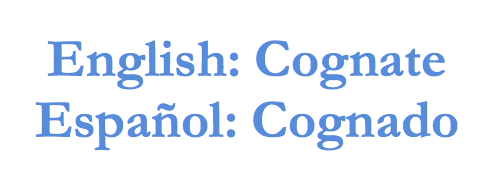In my last two posts, I looked at average TOEFL scores by gender, level of education, reasons for testing, native language, and home country. The information I used comes primarily from ETS’s official 2016 Test and Score Data Summary for the TOEFL. (Some information also comes from their 2015 and 2016 reports, which are no longer publicly available.)
Based on the language groups and regional data in ETS’s 2016 report, it looks like five main factors influence average TOEFL scores for groups of people.
Similarity between your language and English can affect average TOEFL Scores

One important factor is the language of a group of people and how similar to English the language is. Note that European language groups and European countries tend to have better average TOEFL scores. This is because most European languages are more similar to English than other languages. You can also see that Western European language groups and nations have especially high average TOEFL iBT scores. These groups speak languages that are particularly English-like.
You can see the importance of English-like language in the Americas as well. Most South American countries have an official language of Spanish or Portuguese. The phonics and vocabulary of these languages are closer to English than French. So it’s not surprising that the French-speaking islands of Haiti, Guadeloupe, and Martinique have some of the lowest average TOEFL scores in the region otherwise known as “Latin America.”
Average TOEFL scores and national education systems
Another factor is the availability of well-funded, good quality education. Interestingly, one of the countries with the lowest TOEFL iBT scores is Liberia. Liberia’s official language actually is English. However, funding for education in Liberia is very small because the country struggles with severe poverty. This lack of formal education is enough to bring Liberia’s average TOEFL score down to 67, putting it in the bottom half the African countries.
Similarly, the relatively poor nations of Albania and Kosovo have low average TOEFL scores by European standards, with average TOEFL scores of 81 and 82, respectively. At the same time, the nearby nations of Romania and Hungary, with similar language environments but more money for education, have average TOEFL scores that are significantly higher than those of Albania and Kosovo. (Hungary has an average TOEFL of 93, and Romania sits at 91 for average TOEFL scores.)
Average TOEFL scores and the availability of English education
The third factor seems to be the availability of English education specifically. This factor can cause a country to have lower average TOEFL scores, even if its overall education system is strong. Take Japan and South Korea. Both are developed nations with well-funded education systems. But Japan focuses less on English education, while South Korea has made English courses a major part of its education system. The result? In 2017, Japan had an average TOEFL score of 71 compared to South Korea’s 83.
Cultural and economic ties to the English-speaking world = higher TOEFL scores
The final factor that seems to influence average TOEFL scores is a country or language group’s connectedness to the English-speaking world. Finland, for instance, has one of the most non-English-like languages in Europe. But the nation of Finland has lots of ties to the global community and to English speaking economic powers, such as Canada, America, and the U.K. This helps Finland have an average TOEFL iBT score of 95, placing it in the top half of European countries and territories.
Turning to the Americas, you see very high average TOEFL scores for Uruguay and Costa Rica. Uruguay is a small nation where people are very enthusiastic about British and American pop culture. Costa Rica is a country that relies a lot on tourism, especially for tourists from the U.S. and Canada. The nations’ cultural and economic ties to the English sphere give them high average TOEFL scores.
The use of English as a lingua franca
You also see consistently high average TOEFL scores in countries where English is lingua franca–a common language that different groups of language speakers use when they talk to each other. For example, native speakers of Assamese, Hindi, and Bengali all had high average TOEFL scores. These languages are spoken in India. India has a lot of different local languages, but uses English as a public language of communication between all its different language speakers. The “English-as-lingua-franca” phenomenon also helps South Africa, the Philippines, and Antigua & Barbuda to have high average scores on the TOEFL iBT.
The takeaway
It’s important to remember that the group averages for TOEFL in ETS’s 2017 report are just that: group averages. TOEFL scores by individuals in each group can vary a lot. Being from a country like Germany doesn’t guarantee you’ll get a good TOEFL score. And if you have a native language that’s associated with low TOEFL scores–such as Tajik or Khmer–this doesn’t mean that your TOEFL score will be low.
To get a top TOEFL score, understand the ways that your language is similar and different from English, and recognize how these differences and similarities influence you as you learn English. And seek out educational opportunities, either online, through a tutor, or through a local school. In addition, look for aspects of English language culture that you can enjoy and learn from–maybe movies, TV, or music. And talk to fellow ESL students and TOEFL preppers in English; use English as a lingua franca with your peers.






Leave a Reply